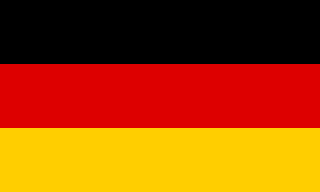 W
W W
WThe German Forest was a phrase used both as a metaphor as well as to describe in exaggerated terms an idyllic landscape in German poems, fairy tales and legends of the early 19th-century Romantic period. Historical and cultural discourses declared it as the symbol of Germanic-German art and culture, or as in the case of Heinrich Heine or Madame de Staël, as a counter-image of French urbanity. It was also used with reference to historical or legendary events in German forests, such as Tacitus' description of the Battle of the Teutoburg Forest or even the nature mysticism of the stylized Germanic national myth, the Nibelungenlied as the history of its multi-faceted reception shows.
 W
WThe German Historical Institute Paris (GHIP) or Institut historique allemand (IHA) is an international research institute situated in Paris, France.
 W
WThe German Renaissance, part of the Northern Renaissance, was a cultural and artistic movement that spread among German thinkers in the 15th and 16th centuries, which developed from the Italian Renaissance. Many areas of the arts and sciences were influenced, notably by the spread of Renaissance humanism to the various German states and principalities. There were many advances made in the fields of architecture, the arts, and the sciences. Germany produced two developments that were to dominate the 16th century all over Europe: printing and the Protestant Reformation.
 W
WHeimatschutz is a German word which literally translated means "homeland protection." The Heimatschutz movement arose in the late 19th century in the wake of the Industrial Revolution, with a focus on nature and landscape conservation as well as the care of historic townscapes, cultural heritage and traditions, folklore and regional identity.
 W
WA hunger stone is a type of hydrological landmark common in Central Europe. Hunger stones serve as famine memorials and warnings and were erected in Germany and in ethnic German settlements throughout Europe in the 15th through 19th centuries.
 W
WThe history of the game of Skat or Scat began in the early 19th century in Thuringia. The game spread rapidly within German-speaking Europe and also in the US and is now one of the most popular card games in Germany as well as being considered Germany's national card game.